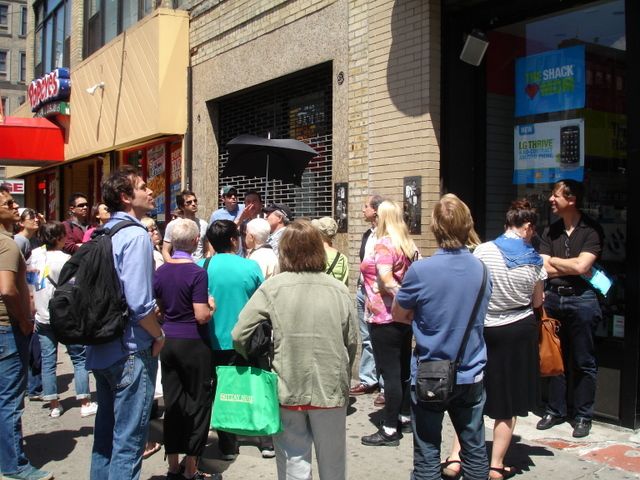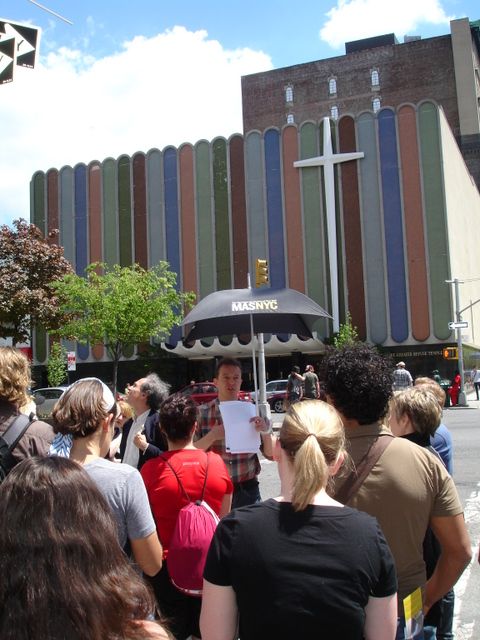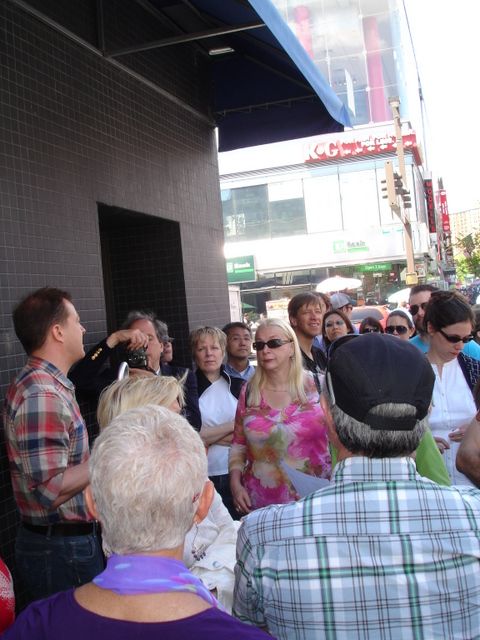

It’s the 50th anniversary of Jane Jacobs’ seminal book, The Death and Life of the Great American Cities. Retrospective publications like Reconsidering Jane Jacobs and Wrestling with Moses were all published this year. HafenCity University in Hamburg is doing a conference called “Queen Jane Jacobs: Jane Jacobs and paradigm shifts in urban planning and urban redevelopment.” In October, Mary Rowe (an urban fellow at the Municipal Arts Society [MAS], Kate Ascher and I will be running a conference at the Rockefeller Foundation’s Bellagio Villa called “Jane Jacobs Revisited: City Building in the 21st Century.”
In New York City last weekend, the Municipal Arts Society hosted Jane’s Walks in all of the five boroughs. Author David Freeland ran a tour called “Harlem: Losses and Gains,” looking at the neighborhood’s forgotten and celebrated gems. David told Untapped about the walk:
“Like all of the Jane’s Walk tours last weekend, the idea for this one was to get out into the city as a community of neighbors and look at how our streets interact with our lives and history. I chose Harlem because of my personal interest in the district and because I wrote about it extensively in [my book] Automats, Taxi Dances, and Vaudeville. Our walk focused on just one portion of Harlem, beginning at the main commercial thoroughfare of 125th Street and working up to 130th Street. Our stops included the former Baby Grand nightclub, whose sign is preserved beneath the doorway of a Radio Shack, half-hidden by cement; the ornate rear exterior of Pabst’s beer garden on 124th Street; the West End, Alhambra and Apollo Theaters; and finally the charming Astor Row on 130th Street, whose gentle, tree-lined sidewalks and houses with wooden porches suggest the bucolic life of a small town. Afterward, a smaller group of us toured the Strivers’ Row houses on 138th and 139th Streets.”
Here are some photographs taken by Rafael Diazcasas of the walk on the beautiful Sunday afternoon:
At the Radio Shack, where the sign of the former Baby Grand nightclub is concealed beneath the doorway:

Standing in front of the Alhambra Theater and Ballroom, 126th Street. Music greats such as Bessie Smith performed here:

Rear of Pabst’s beer garden, 124th Street. Around 1900, Pabsts’s was reputed to be the largest restaurant in the United States:

Across the street from the former Harlem Casino/Loew’s Seventh Avenue Theater, possibly the oldest theatrical building in Manhattan:

125th Street and 8th Avenue (next two photos):

125th Street and Lenox Avenue (next two pictures):


124th Street:



Check out David’s book: Automats, Taxi Dances, and Vaudeville: Excavating Manhattan’s Lost Places of Leisure



